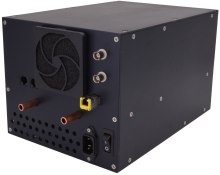 We are pleased to announce a new variant of Archon, called Archon AC. This version of our CCD controller is taller than the standard chassis, but integrates the AC/DC and DC/DC converters to simplify cabling and reduce costs. It also includes a water block for cooling, and the fan can be disabled in software for dedicated liquid-cooled applications. The new options have been added to the Archon manual and price list. The standard AD module has also been updated to Rev K, and demonstrates crosstalk levels better than 1 in 107. The Archon Backplane has been updated to Rev F, and offers better jitter performance when synchronizing multiple systems, along with system fan tachometer reporting. Learn more here.
We are pleased to announce a new variant of Archon, called Archon AC. This version of our CCD controller is taller than the standard chassis, but integrates the AC/DC and DC/DC converters to simplify cabling and reduce costs. It also includes a water block for cooling, and the fan can be disabled in software for dedicated liquid-cooled applications. The new options have been added to the Archon manual and price list. The standard AD module has also been updated to Rev K, and demonstrates crosstalk levels better than 1 in 107. The Archon Backplane has been updated to Rev F, and offers better jitter performance when synchronizing multiple systems, along with system fan tachometer reporting. Learn more here.


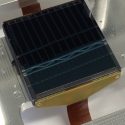
 We are pleased to announce a new variant of Archon, called Archon AC. This version of our CCD controller is taller than the standard chassis, but integrates the AC/DC and DC/DC converters to simplify cabling and reduce costs. It also includes a water block for cooling, and the fan can be disabled in software for dedicated liquid-cooled applications. The new options have been added to the Archon manual and price list. The standard AD module has also been updated to Rev K, and demonstrates crosstalk levels better than 1 in 107. The Archon Backplane has been updated to Rev F, and offers better jitter performance when
We are pleased to announce a new variant of Archon, called Archon AC. This version of our CCD controller is taller than the standard chassis, but integrates the AC/DC and DC/DC converters to simplify cabling and reduce costs. It also includes a water block for cooling, and the fan can be disabled in software for dedicated liquid-cooled applications. The new options have been added to the Archon manual and price list. The standard AD module has also been updated to Rev K, and demonstrates crosstalk levels better than 1 in 107. The Archon Backplane has been updated to Rev F, and offers better jitter performance when 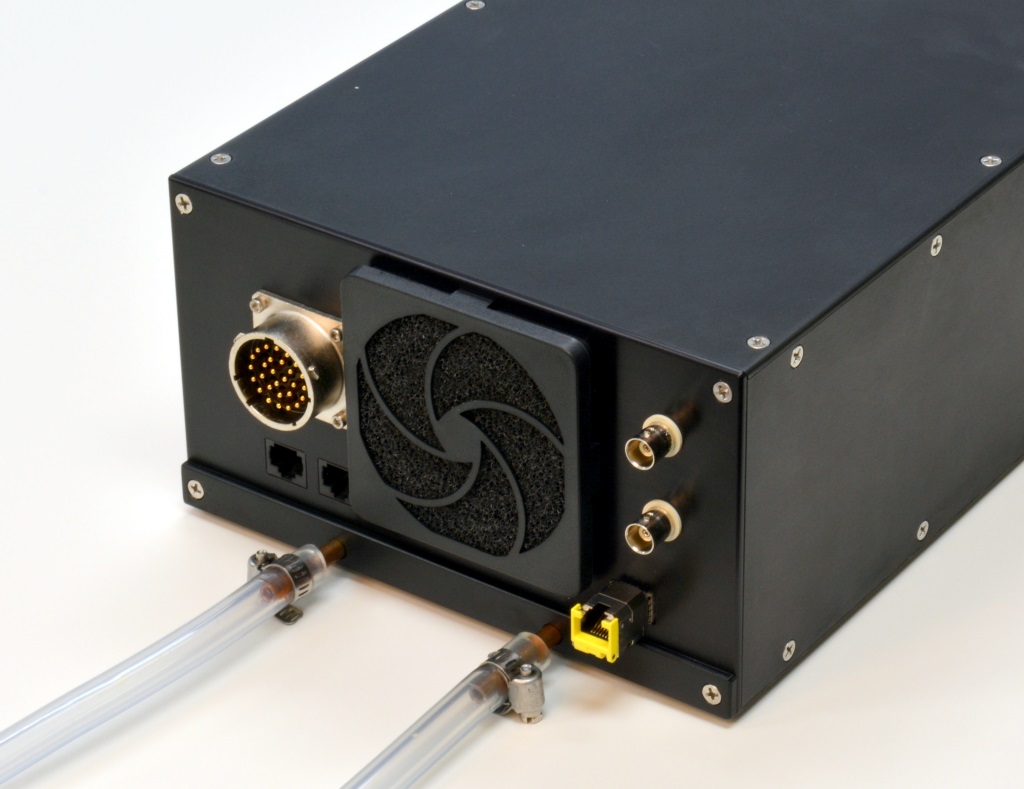
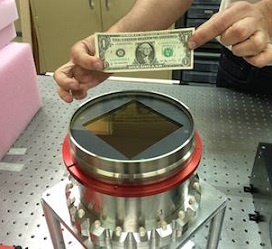 The Asteroid Terrestrial-Impact Last Alert System (ATLAS) is being developed by a team of astronomers at the University of Hawaii and is funded by NASA. ATLAS is an asteroid impact early warning system consisting of two telescopes that will scan the whole sky several times every night looking for moving objects. Each telescope has a 10k x 10k STA1600 CCD and an Archon controller. When the project’s Haleakala and Mauna Loa sites are complete by early 2016, ATLAS can provide one day’s warning for a 30-kiloton “town killer,” a week for a 5-megaton “city killer,” and three weeks for a 100-megaton “county killer” asteroid. More information on ATLAS is available
The Asteroid Terrestrial-Impact Last Alert System (ATLAS) is being developed by a team of astronomers at the University of Hawaii and is funded by NASA. ATLAS is an asteroid impact early warning system consisting of two telescopes that will scan the whole sky several times every night looking for moving objects. Each telescope has a 10k x 10k STA1600 CCD and an Archon controller. When the project’s Haleakala and Mauna Loa sites are complete by early 2016, ATLAS can provide one day’s warning for a 30-kiloton “town killer,” a week for a 5-megaton “city killer,” and three weeks for a 100-megaton “county killer” asteroid. More information on ATLAS is available 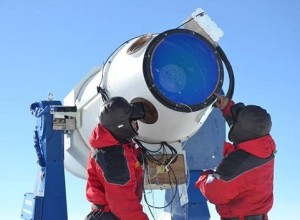

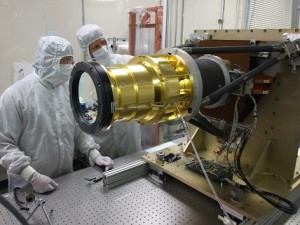 o save lives, Lockheed Martin’s Geostationary Lightning Mapper (GLM) will provide earlier alerts of developing tornados and severe storms by monitoring lightning on a continental scale. The 500 frame per second CCD imager with variable pixel size (STA3900A) at the heart of the GLM was developed by Semiconductor Technology Associates, Inc. The variable pixel size provides a near uniform mapping of the curved surface of the earth. This, in conjunction with the 500 frame per second readout rate and excellent system optical throughput, establishes 70-90% flash detection day and night. The GLM will fly on the National Oceanic and Atmospheric Administration (NOAA) GOES-R Series environmental satellites beginning in 2016. The Lockheed Martin press release can be read
o save lives, Lockheed Martin’s Geostationary Lightning Mapper (GLM) will provide earlier alerts of developing tornados and severe storms by monitoring lightning on a continental scale. The 500 frame per second CCD imager with variable pixel size (STA3900A) at the heart of the GLM was developed by Semiconductor Technology Associates, Inc. The variable pixel size provides a near uniform mapping of the curved surface of the earth. This, in conjunction with the 500 frame per second readout rate and excellent system optical throughput, establishes 70-90% flash detection day and night. The GLM will fly on the National Oceanic and Atmospheric Administration (NOAA) GOES-R Series environmental satellites beginning in 2016. The Lockheed Martin press release can be read